
Conversation Archives
Videos and Analyzed DataConversation Archives
Conversation Analysis
Each conversation is accompanied by an analysis to give a quick evaluative summation of the students’ performance along with a recommendation of how the students could do better. Various patterns of fluency and dysfluency might be cited if the issue is relevant to the video / transcript.
View Sessions by Type
The Buttons
below provide access to our archive by session, level or type
Basic
Advanced
Type
BASIC LEVEL
Session 1

Naoyuki and Syuhei
This discussion, though it may not be apparent from just watching the video, is somewhat unbalanced, with Shuhei dominating the discussion, having 472 words compared to Naoyuki’s 229. The participants are engaged, as there is only 5.8% silence, and MLRs is average, 9.2, for Shuhei, but Kure’s is fairly low, 5.0. Shuhei does have a high level of repetition 29 as compared to Naoyuki’s 10 occurrences. There is a high level of meaningless syllables for both participants.
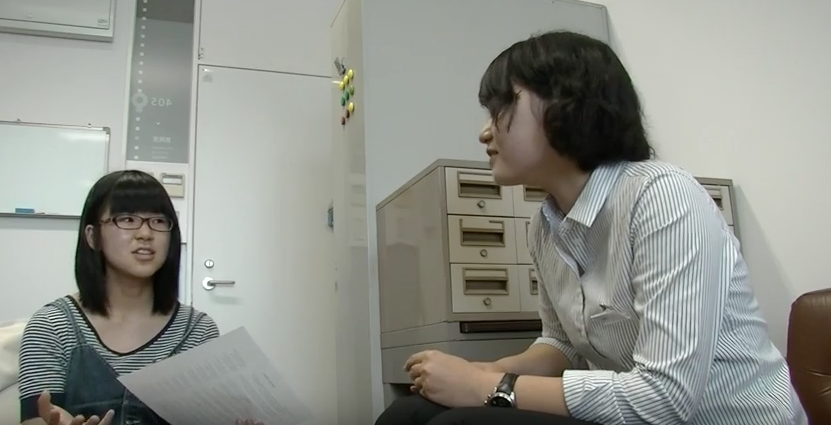
Nanase and Yuki
This first same-sex session is interesting in that there were no cross-talk pausing. The discussion had only 23.3 seconds of silence which is a mere 4.1%. Fluency rates for both females was 109.8 for Yuki as compared to Nanase’s 74.3 who also had 355 words, almost 150 more than Yuki’s. There were more minimal responses. The two seemed to enjoy talking. Recommendations would be for both to focus on larger replies.

Nanase and Shuhei
One of the strengths is of this dialogue is that the participants have established a good rapport—a great deal of laughter is to be noted. Cross talk pausing is moderately high, but it was notable that Nanase’s amount of silence was only 5.7 as compared to Shuhei’s 19.5 seconds. Fluency for both participants is high but could be improved with fewer repetitions. Shuhei has 482 words compared to Nanase’s 379, and the male has a MLR of 14.0 syllables as compared to the female’s 8.7
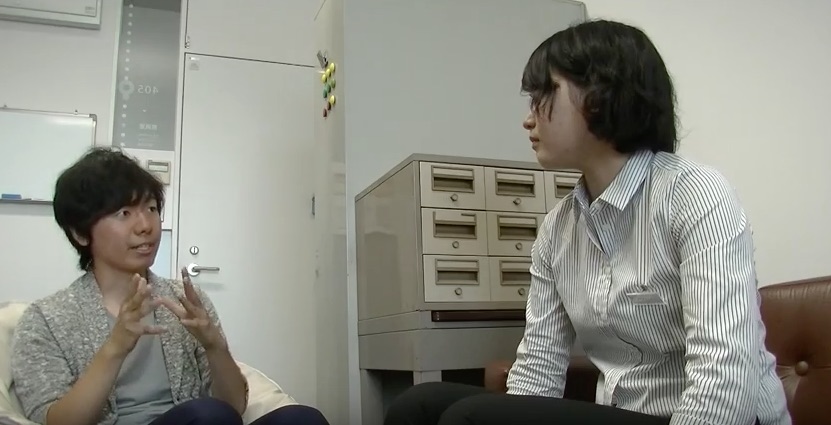
Shuhei and Yuki
This discussion is interesting with very little cross-talk pausing (3.5 seconds) and tends to be smoother than others. Minimal responses are limited. Shuhei’s speaking rate is far higher than usual (137.0) while the Yuki’s shows an average rate of speech (86.1). The use of L1 is rather high for Yuki (15 occurrences), and MLRs are rather average for this level of proficiency, with Yuki having 9.2 syllables and Shuhei having 14.7. Further, with the trend of males talking longer than females, Shuhei has 529 words compared to Yuki’s 313, but Yuki has only 7 meaningless syllables as compared to Shuhei’s 59.
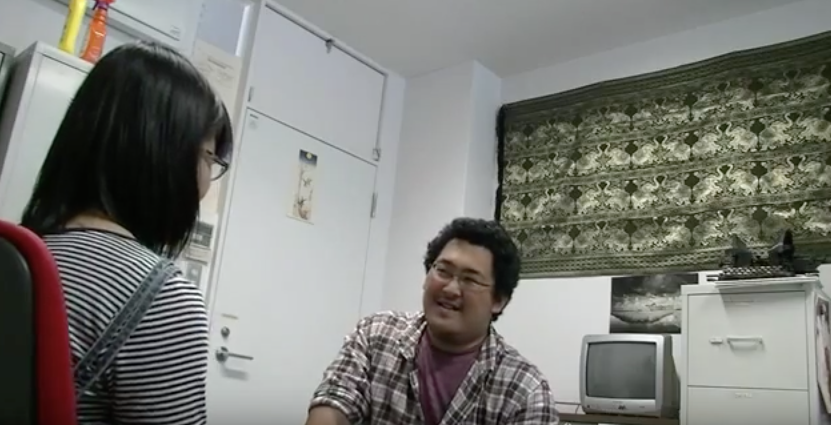
Nanase and Naoyuki
This discussion reflects a balanced and engaged discussion. Both participants have a high number of words 518 for Kure and 555 for Nanase along with similar MLRs 11.4 for Kure and 10.5 for Nanase. Nanase does have a lot of repetition 49 occurrences and higher retracing. Furthermore, the speaking rate is fairly high 92.0 and 99.7. The amount of silence is moderate, 6.8% or 62 second

Naoyuki and Yuki
While this conversation is far more balanced than others, there is a high level of cross-talk pausing 27.2,and there is a high rate of silence, 59.5 seconds or 8.6%. Mean length of pauWhile this conversation is far more balanced than others, there is a high level of cross-talk pausing 27.2,and there is a high rate of silence, 59.5 seconds or 8.6%. Mean length of pausing is rather high, for Naoyuki it is 4.1 and for Yuki 3.8, however, there is an average rate of speaking for Yuki (78.5) and a higher one for Naoyuki (95.9). The participants do enjoy talking with each other, as noted by the laughter.sing is rather high, for Kure it is 4.1 and for Yuki 3.8, however, there is an average rate of speaking for Yuki (78.5) and a higher one for Kure (95.9). The participants do enjoy talking with each other, as noted by the laughter.
Session 2

Shohei and Megumi
This gendered discussion is interesting insofar that both participants really seemed to enjoy talking, so the percentage of silence is low, around 3.5%. Cross-talk pausing is not evident. There was a high rate of speaking rate for Shohei 122.7 as compared to Megumi’s, which was somewhat low 58.9. One issue that is apparent from the transcript is the very high level of minimal responses, so longer replies could help to improve the overall fluency of both participants.

Kohei and Megumi
This discussion is rather fluid, with low cross-talk pausing 4.3 seconds, with a total amount of silence being 32.5 seconds. Lexical dysfluency is very limited to just some L1 usage, though syntactic dysfluency is high on one variable, repetition (Megumi: 25 occurrences). MLRs are fairly the same length for both participants, 8.1 for Kohei and 10.5 for Megumi. Kohei’s speaking rate is relatively high 101.0 but Megumi’s could be much higher 57.7 There are some minimal responses.
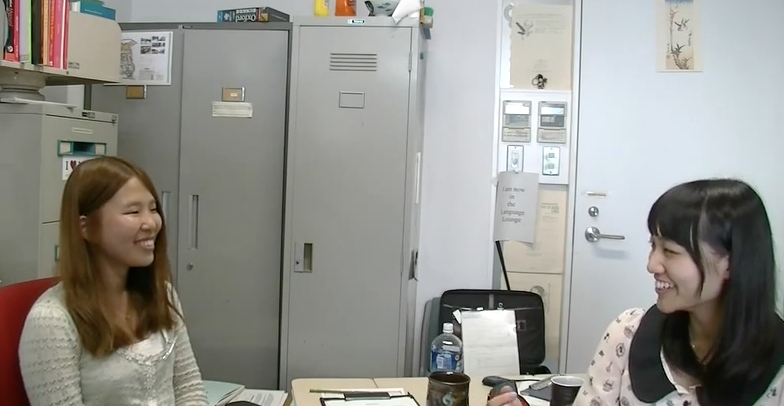
Megumi and Yuri
This discussion between Yuri and Megumi shows a higher level of speaking rate for Yuri, 104.6, and a lower one for Megumi. There is a low rate of silence of 5.7% The girls are are very animated, Mean length runs are 7.6 for Yuri’s and 6.5 for Megumi. And there is low acoustic dysfluency 5.0%, as well as a low lexical and syntactic dysfluency, though the levels of repetition could be lower. The interaction is balanced, with 254 words for Yuri and 248 for Megumi. In short, this is a good example of fluency in same-sex interactions, though minimal responses are bit too frequent.

Kohei and Yuri
This discussion is a first insofar that Yuri had a higher number of words than Kohei, 398 words compared to 266, though Yuri had a higher number of meaningless syllables, 75. MLRs are fairly similar. The total number of silence is high 99.8 seconds, a 13.0%, which is a bit high, but the two participants enjoyed each other. The speaking rate for the Kohei is high 100.7 while Yuri’s is somewhat low, 64.8.
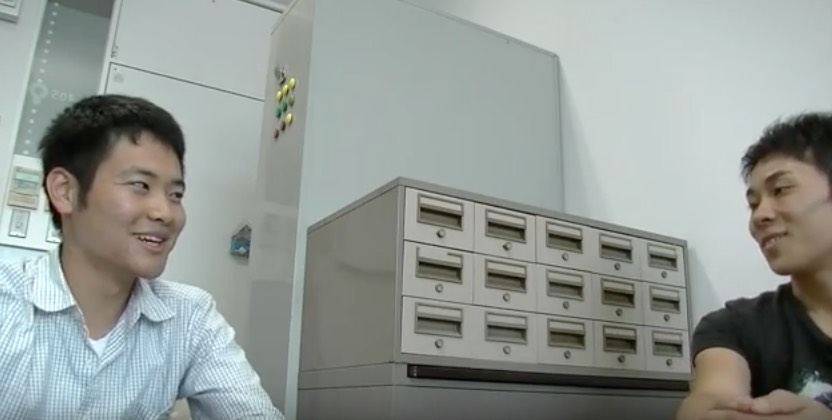
Kohei and Shohei
This second same-sex discussion was interesting as both males had high speaking rates 116.2 and 116.7, with no cross-talk pausing. Dysfluency is limited though Kohei had a high level of repetition (38 occurrences) as well as a high level of meaningless syllables 96. There is some unbalance to the discussion with Shohei talking more than twice as long as Kohei, so my recommendations would be that Kohei provide more descriptive responses and stories.
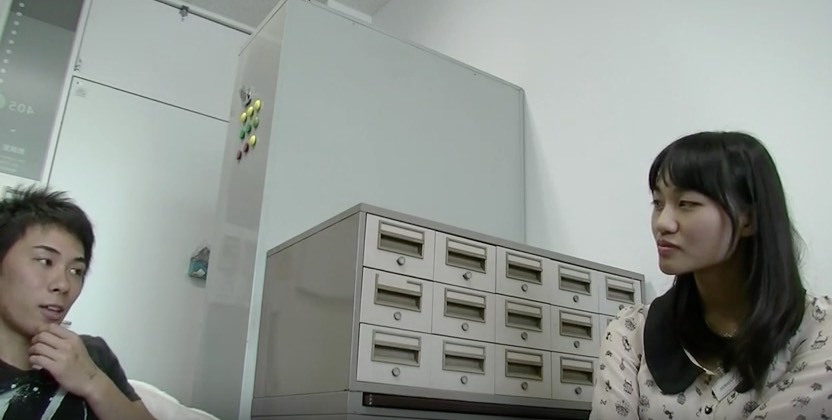
Shohei and Yuri
This gendered discussion between Shohei and Yuri is quite fluid, with no cross-talk pausing. Intonation is marked, laughter is common, though minimal responses are too common. MLR are too short for Yuri who had 5.8 syllables as compared to Shohei’s 9.9. Shohei had a high rate of meaningless syllables 64 which is double Yuri’s, 29. Yuri’s speech is notable insofar that she had no silence in her speech while Shohei had 44 seconds. Recommendations seem to focus on reducing repetition and rephrasing with Yuri talking longer and giving more descriptive replies. Again, Shohei had four times the number of words as Yuri, 433 words compared to 108.
Session 3
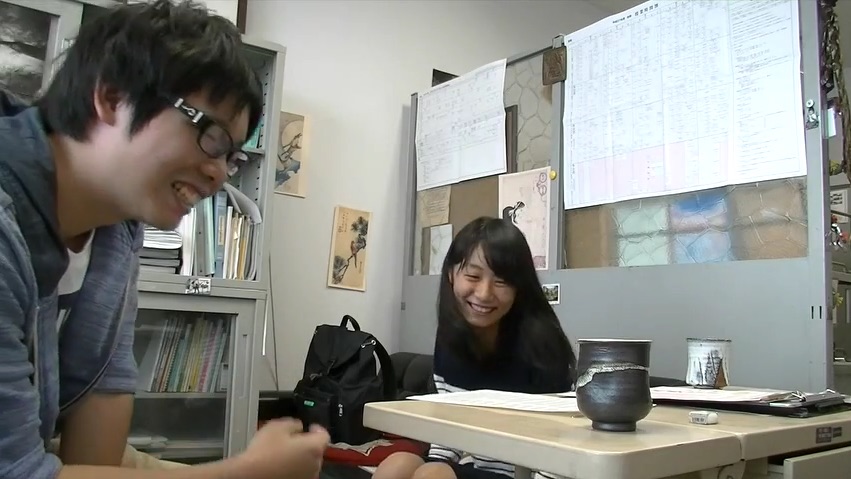
Yuki and Nozomi
This discussion is marked by a rather high level of cross-talk pausing 28.6, and a high level of silence 120.8 seconds / 19.1% which is too high. Minimal responses are evident with both participants. Yuki did, however, when he did speak, have a high speaking rate (155.3) as compared to Nozomi’s 55.5, but this speaking rate has relatively little meaning due to the frequency of the minimal responses. Again as seen in other discussions, Yuki dominated the interaction with 482 words compared to Nozomi’s 149

Yuki and Nanami
This discussion between Yuki and Nanami shows, again, the tendency for males to dominate gendered discussions. Yuki’s speaking rate is 100.9 while Nanami’s is 49.3; likewise, Yuki’s number of words is 462 while Nanami’s is 285.While the amount of silence is low 6.6%, Nanami has 39.9 seconds compared to Yuki’s 0 seconds. Lexical and syntactic dysfluency is average, though Yuki does have a high level of repetition with him repeating “yes” too often. I would recommend that women take some time to see how they can be better engaged and proactive in such discussions.
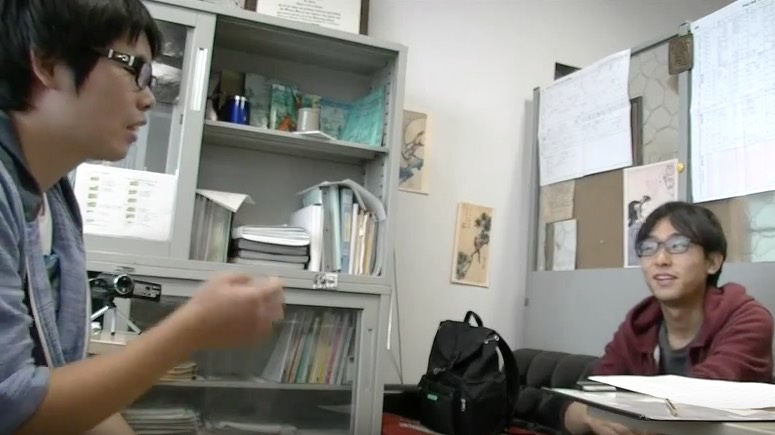
Yuki and Hikaru
This discussion between Yuki and Hikaru reflects a high speaking rate, with a low percentage of silence (5.6%) and little lexical and syntactic analysis, though there is a high level of repetition with Yuki. Mean length runs are rather short, 6.2 and 7.7. and the number of words is about low (281) to average (369). The conversation is spirited and the men are engaged. I would recommend that both men take more time to explain and to provide more background when telling a story or explaining a preference.

Nozomi and Nanami
This discussion is notable insofar that there is an extremely high level of silence, particularly with cross-talk pausing, 125.3 seconds, and overall there was a 184.6 seconds or 29.9%. This reflects that the two women were somewhat ill-at-ease in finding common ground, though, again, this may not be apparent from just watching the video. Minimal responses are extremely common throughout this discussion, and MLRs are very short as well, 5.7 for Nanami and 5.6 for Nozomi. The number of words is on the low-side, around 253 and 223.

Hikaru and Nanami
Speaking rates for both participants are moderately average 81.4 for Nanami and 92.2. Cross-talk pausing is rather low, at 6.9 seconds, and the overall percentage of silence is 10.4% Again, as males tend to dominate discussions, Hikaru has 452 words compared to 187. Also, in regard to MLRs Hikaru has 9.5 syllables compared to Nanami’s 4.6 syllables though Hikaru has a higher rate of meaningless syllables 29 compared to Nanami’s 10. The conversation is fluid but there is some awkward moments to it.
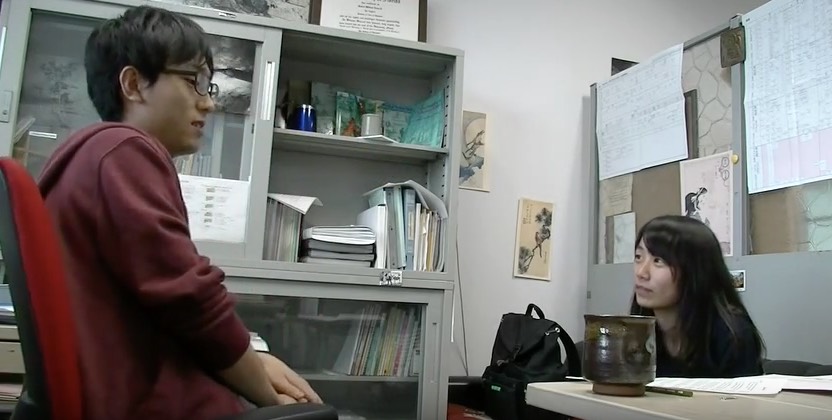
Hikaru and Nozomi
From this discussion, we can see the usual trend of males out-talking females to be confirmed, with Hikaru talking 521 words to Nozomi’s 108. Syntactic dysfluency is rather limited, with just 12 repeated words for Hikaru, but what is notable is the MLRs, Nozomi had 3.2 (low) compared to Hikaru’s 11.9 (rather high). Nozomi’s speech is marked with many minimal responses, so she could improve her fluency by providing longer replies, more descriptions, and a few stories to fill out her production. Cross-talk pausing is 15.5, but both participants seemed to enjoy talking with each other.
Session 4

Taiki and Yuki
This discussion is also a bit unbalanced with the Taiki having 338 words compared to Yuki’s 178, who has too many minimal responses. MLRs are 16.9 for Taiki which is double than Yuki’s 8.8. The percentage of silence is high, 21.4%, 126.3 seconds. Taiki’s amount of silence is a bit higher than Yuki’s, however, 29.6 seconds to Yuki’s 19.3 seconds. Taiki does have far more meaningless syllables 23 compared to Yuki’s 8. Cross-talk pausing is fairly high; 77.4 which shows that there is some anxiety in talking between the two perhaps.

Taiki and Yuki
This is one of the more fluent discussions marked by high speaking rates, Yuka’s 129.2 and Masaki’s 140.1, and with no cross-talk pausing. The percentage of silence is very low 0.8%, 5.3 seconds. Average mean length runs (MLRS) are also very high, with Masaki having 25.1 and Yuka’s 13.2; however, as males tend to dominate discussions, this is also the case, with Masaki having 669 words compared to Yuka’s 348. Minimal responses are few.
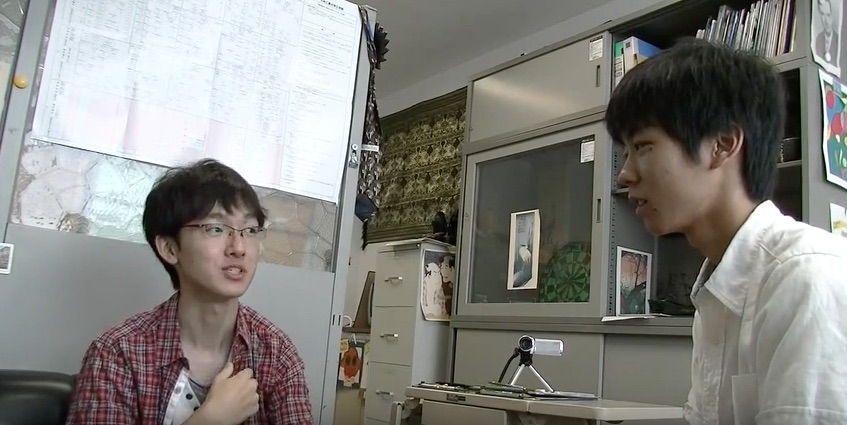
Taiki and Takaki
In this discussion, Nishio has a higher speaking rate than Kawabata, 122.7 to 88.4,but both speakers have long MLRs, 12.8 and 13.0. The amount of silence is somewhat high, 13.1% or a 109.3 seconds. The average pause time is also high 5.1 to 4.4. Both speakers were productive, with a high number of words, 406, to Kawabata’s 519. The discussion is animated, and both speakers are engaged. Minimal responses are few.
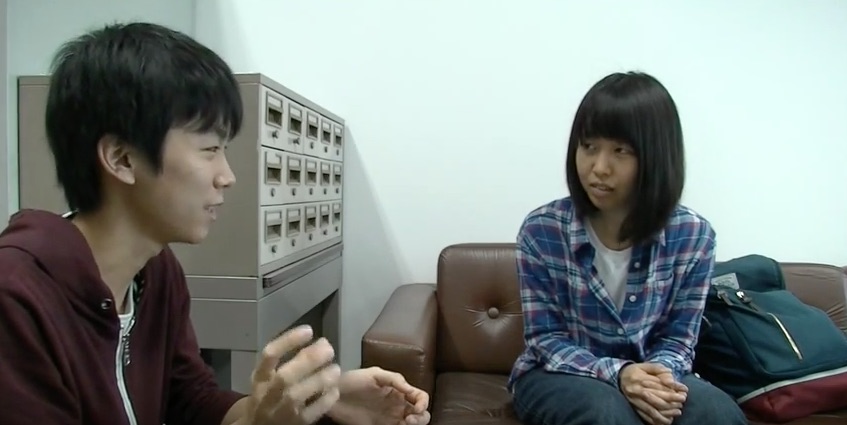
Takaki and Yuki
In this discussion, Yuki’s minimal responses are very common place, often being just one word. Her fluency rate is 64.1 compared to Takaki’s 99.1, however, cross-talk pausing is only 5.7 seconds. Total amount of silence is 40.1 seconds or 6.7%. Takaki’s MLRs are a bit longer than usual, 20.9 syllables, but Yuki’s are only 7.1. So, again, male domination is to be seen with 449 words from Takaki compared to Yuki’s 137.

Takaki and Yuki
This conversation reveals again the tendency for males to dominate discussions, so Nishio does have more production 586 words compared to 442 for Yuki, who also has a high level of meaningless syllables for this discussion. Both participants seemed to enjoy the discussion; they were engaged, and laughter is common, and there is no cross-talking pausing. The amount of silence is very limited, 2.3%. Yuki does have too many repetition, 36. MLRs are average for this level of proficiency, 11.5 and 8.7.
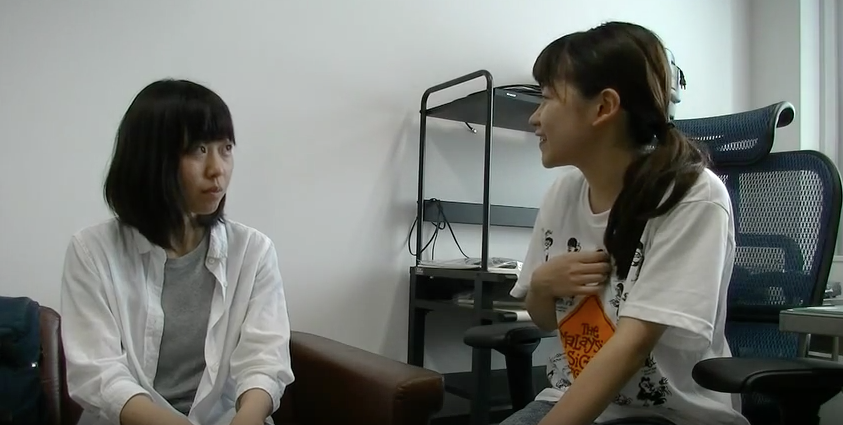
Yuki and Yuki
There is some unbalance to this discussion with Yuki Oyama having roughly twice as many words that Suzuki-san, 438 to 268. Oyama-san seems to have a higher level of proficiency, showing a 95.2 speaking rate as compared to Suzuki-san’s 70.2. There is a surprising high level of cross talk pausing, 56.5 seconds. The amount of silence for the conversation is moderate, 11.0%, or 82.5 seconds. Oyama-san has a high level of meaningless syllables 33 as compared to Suzuki-san’s, 10. Lexical dysfluency is low, though Oyama-san does use Japanese frequently, 7 occurrences.
Session 5

Sho and Ayaka
For this conversation, the speaking rates are fairly normal for this proficiency group (118.6) to Ayaka’s 87.7. Similarly the amount of silence is a little high but not necessarily noteworthy, 12.0%. There is little commentary from Ayaka to some of Sho’s comments, and she tends to ask few (3) questions. Cross-talk pausing is minimal, 10.4 seconds. Ayaka also relies too much on minimal responses, and provides very few details about her life.
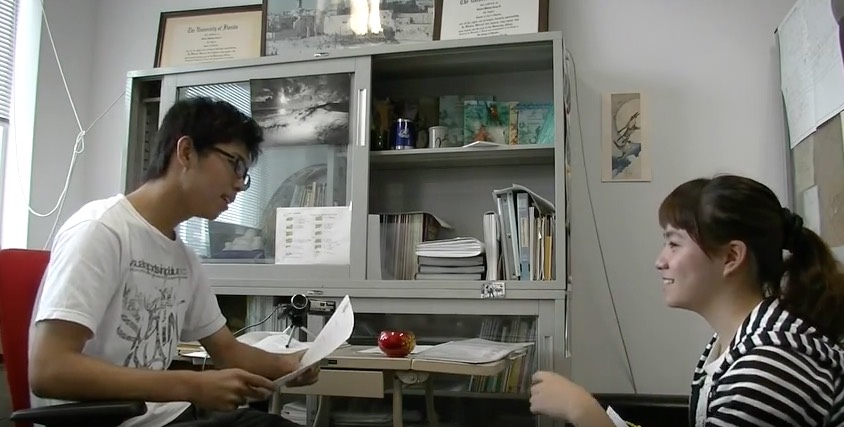
Yuma and Miya
This is one of the few discussions in which the female has dominated the discussion, with Miya having 340 words compared to Yuma’s 228. This discussion is made of too many minimal responses. MLRs are somewhat short: 6.5 for the male and 7.5 for Miya, and the percentage of silence is very high, 28.0, 177.1 seconds. Other forms of dysfluency is rather normal but Miya has more repetition and use of L1 than Yuma.

Yuma and Ayaka
Cross-talk pausing is very high with this discussion, 51.1 seconds, and the overall amount of silence is very high 31.0% or 186.4 seconds (3 minutes). The average mean length of pausing is also notable, with Yuma MLP being 6.3 seconds and Ayaka’s 9.1. Nonetheless, Yuma has slightly more production with 229 words compared to Ayaka’s 195. Speaking rate is average (72.7 for Yuma) to high 99.9 for Ayaka. The conversation is a bit awkward.
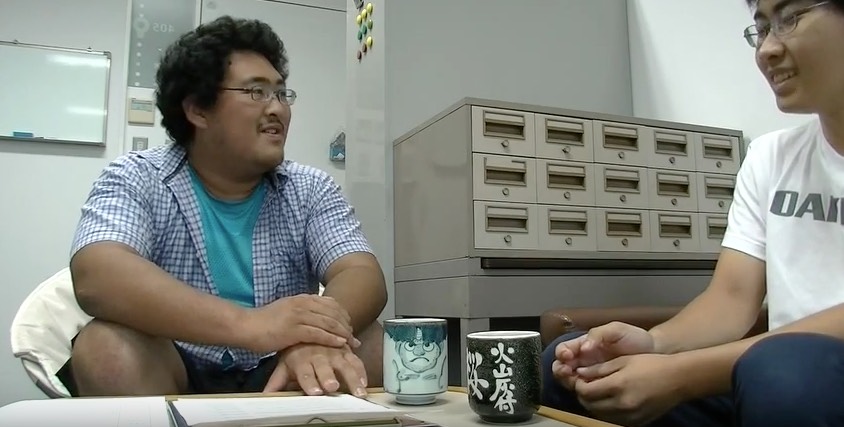
Naoyuki and Sho
Both males have a high speaking rate, 106.5 for Sho, and 112.6 for Naoyuki. Cross-talk pausing is not very high, 19.0 seconds, as well as the percentage of silence, 9.9% though this is 74.8 seconds. Mean length runs are fairly normal 12.6/9.0, and both participants are productive, with Naoyuki having 640 words and Sho having 441 words. Both males have few minimal responses

Naoyuki and Yuma
This conversation is notable insofar that there is an unusually high rate of cross-talk pausing 54.4, which is rather uncommon for males. The overall amount of silence is also extremely high: 136.7 seconds. Yuma has a high rate of use of L1 and a low speaking rate, 71. 4 as compared to Naoyuki’s 118.1 which is more average for this level of proficiency; however, Naoyuki does have a very high rate of repetition and meaningless syllables. Yuma’s monotone does make listening difficult, and this is one issue that should be addressed. More minimal responses in this conversation. Both participants do have a very high number of words, for Naoyuki 475, and for Yuma, 399.

Sho and Miya
In this discussion, there is a moderate level of cross-talk pausing, 22.7 seconds; the amount of silence is 46.7 seconds or 7.6%. Furthermore, it is interesting that Sho tends to ask most of the questions. He also has the highest number of words 431 compared to Miya’s 280. Miya does not seem to be aware that she should also inquire or to provide more descriptive answers, or opinions. There is not-enough follow-up. Miya has too much repetition, and again, the number of words are showing that males again tend to dominate conversations, with Sho having 431 and Miya having only 280.

Miya and Ayaka
This is one of the more “silent” discussions with cross-talk pausing being extremely high 202.4 seconds, and the overall amount of silence being 311.2 seconds or 40.6%. Minimal responses almost make up the entire discussions. It seems that both girls had a hard time relating to each other. Ayaka’s silence is 87.2 compared to Miya’s 21.6. Speaking rate is about average 66.0 to Miya’s 86.2. MLPs are long 7.2 seconds.
Session 6

Mao and Daiki
This same-sex male discussion went smoothly, with only 7.0 seconds of cross-talk pausing, but there was a total amount of 94.4 seconds of silence. Speaking rates are average 70.0 and 69.8. MLRs are also very average, 7.4 and 12.0 and both speakers had roughly the same amount of words, Daiki having 197 and Mao having 166.
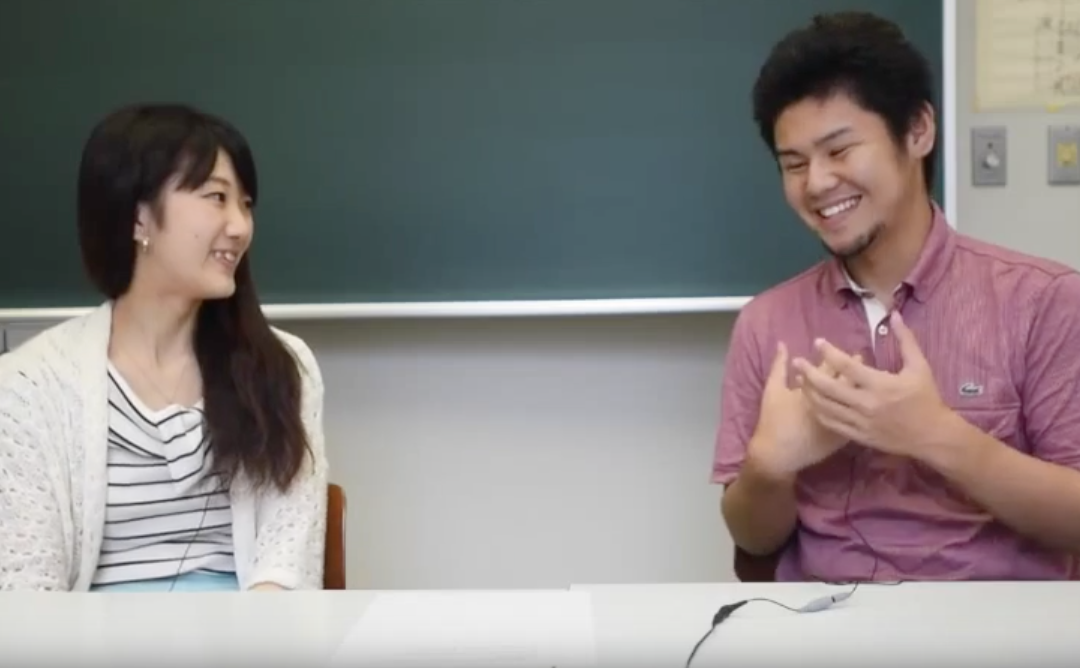
Ayaka and Daiki
Continuing the trend of male domination, we can see that Daiki’s MLRs are twice that of Ayaka’s 13.6 to 6.3, and even for speaking rate, Daiki has 91.3 compared to Ayaka’s 65.9; furthermore, Daiki has 393 words compared to Ayaka’s 189. Meaningless syllables are, as always, higher with males, so Daiki has 80 compared to Ayaka’s 24. Ayaka does talk longer and provide more content, and this is to be commended. Percentage of silence is normal, 9.8%. The conversation is more engaged and both participants are more motivated.
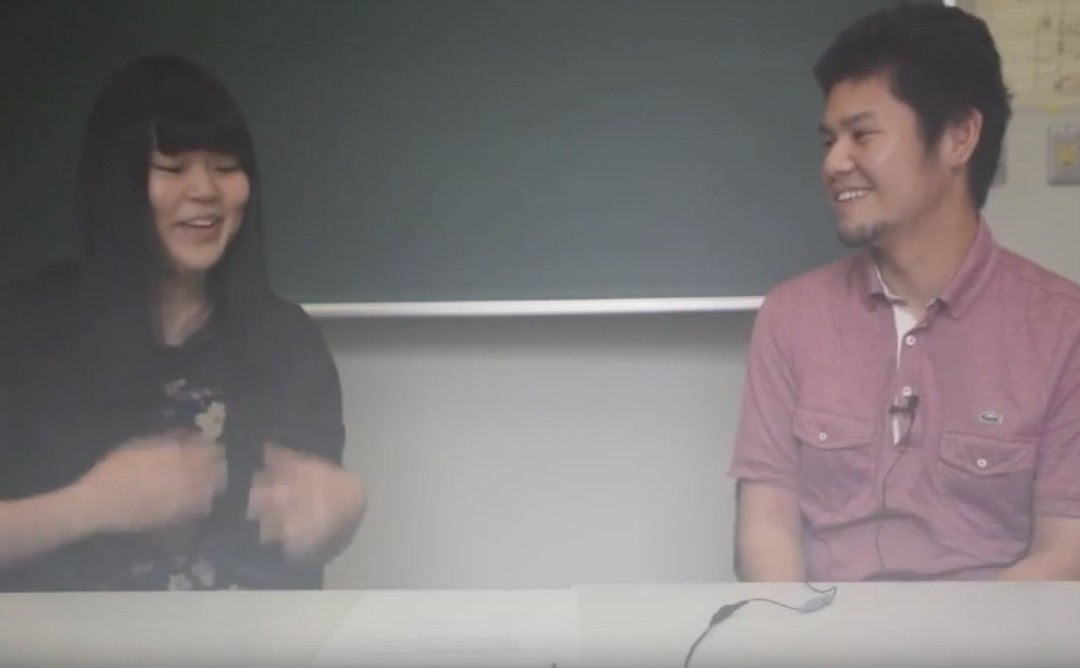
Nanami and Daiki
Nanami does seem to have too many minimal response, and she could have provided more descriptive answers, and have asked more questions. So, again we have Daiki having 388 words compared to her 189. Repetition is a bit high and is the same for both participants: 20 words. Percentage of silence is low, 3.1%. MLRs are average, but Nanami’s is a bit low, 7.1 compared to Daiki’s 11.6
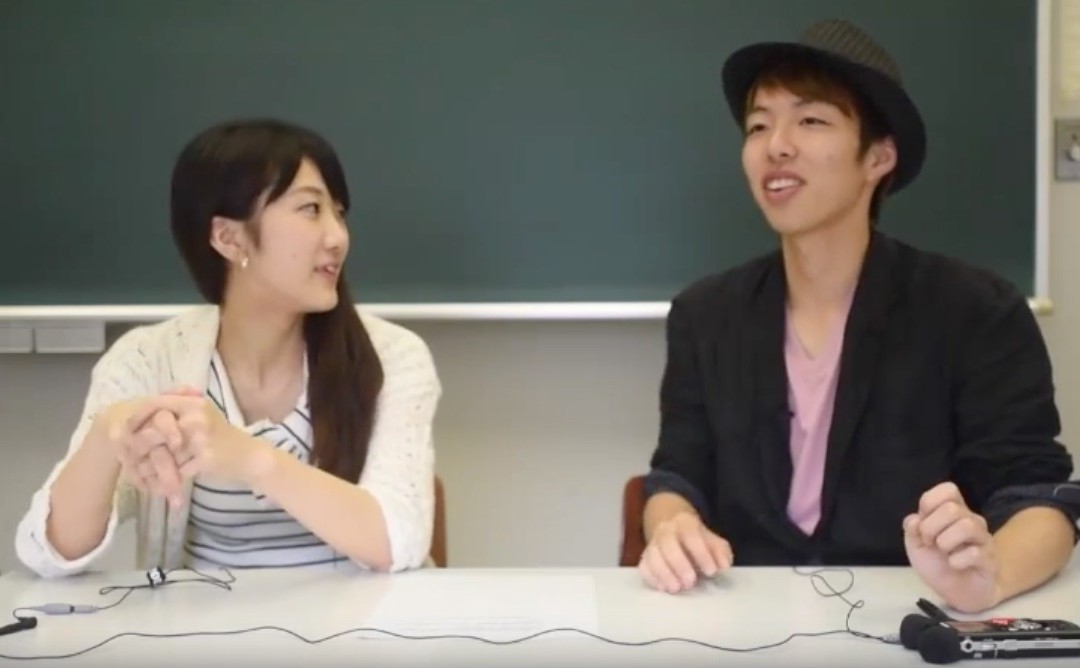
Ayaka and Mao
The speaking rates for both participants are fairly average, 68.9 for Ayaka and 79.1 for Mao. Again, minimal responses are far too common with Ayaka, and often are just one word. Mao does have a high rate of repetition, 23 words compared to Ayaka 8, and the total amount of silence is 120.2 or 19.2%, which is too high and the cross talk pausing is a bit high, 23.1 seconds. Dsyfluency is minimal but so is the production, with Mao having 326 words, and Ayaka’s 169. MLRs are also a bit on the short side, with 6.2 words with Ayaka and Mao’s 8.2.
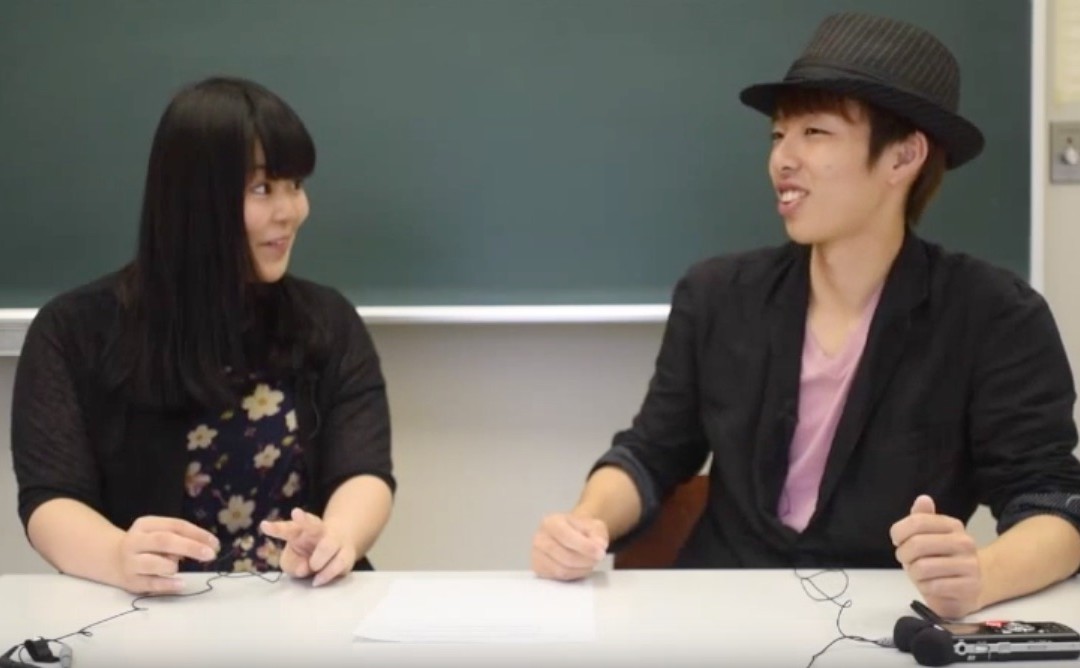
Nanami and Mao
This discussion has both participants with an average speaking rate, 63.4. for Nanami and 89.2 for Mao. Cross talk pausing is limited to just 6.3 seconds, so it is evident that the participants were comfortable with each other. Again, Mao tended to be more productive with 327 words compared to Nanami’s 227. The percentage of silence is rather high though 19.5% or 117.5 seconds.
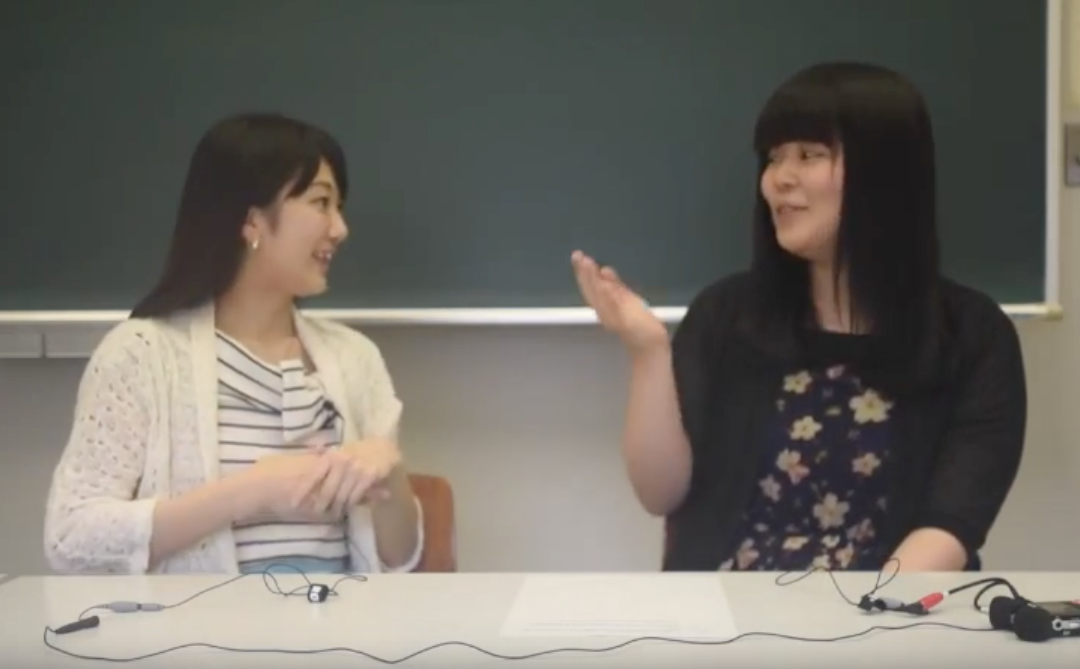
Ayaka and Nanami
The discussion starts off lively, and both participants are engaged. Speaking rate is 109.1 for Ayaka and 114.6 for Nanami. However, MLRs are very short, 5.4 and 7.6 syllables though part of this is due to the high number of minimal responses, though the number of words is slightly higher than normal, 349 for Ayaka and 430 for Nanami. We do see a high rate of meaningless syllables for both participants, which is a bit unusual for female speakers.
Session 7
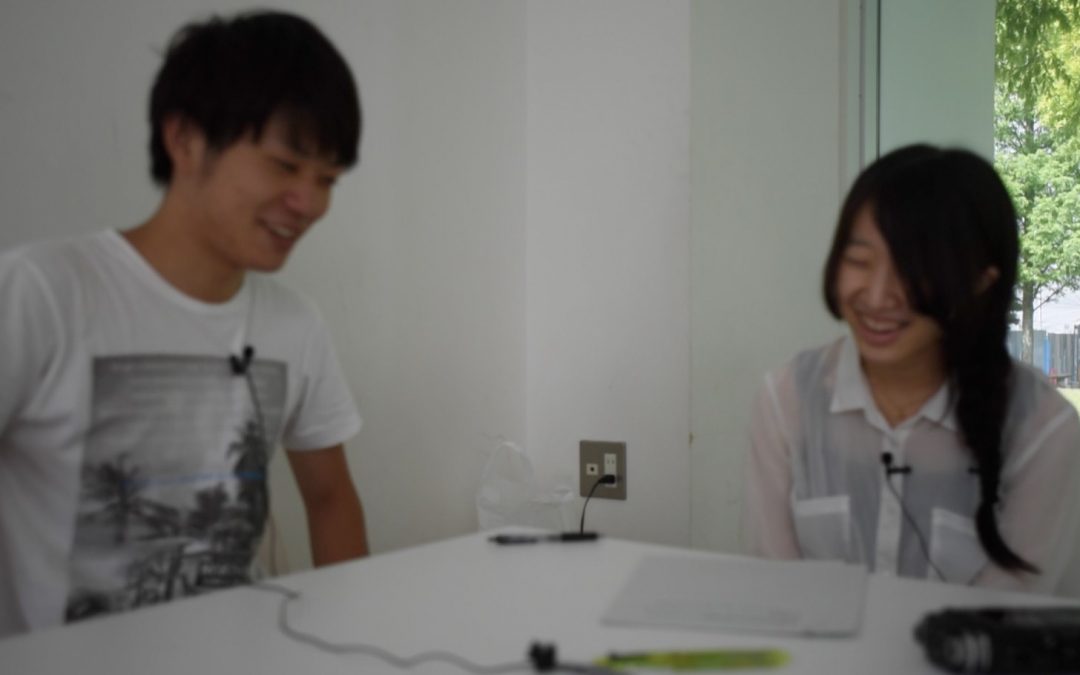
Yuusei and Harumi
(This conversation has no video)
This discussion in session eight between Yuusei and Harumi shows a relatively low speaking rate, with Harumi having a speaking rate (A) of 59.5 as well as having a short MLR of 5.1. Her responses tend to be quite passive and uninformative and again her number of words are almost half of that of Yuusei’s. Yuusei’s articulation rate is a bit faster 1.8 to 1.1 but his speaking rate is 40 points higher than Harumi’s. However, Yuusei’s amount of silence is quite high 35.1 seconds compared to Harumi’s of 2.2. Lexical dysfluency is low but in syntactic dysfluency, there is a lot of repetition from both speakers. In short, this is a situation in which both speakers can bring far more to the table and to be more confident in their production.
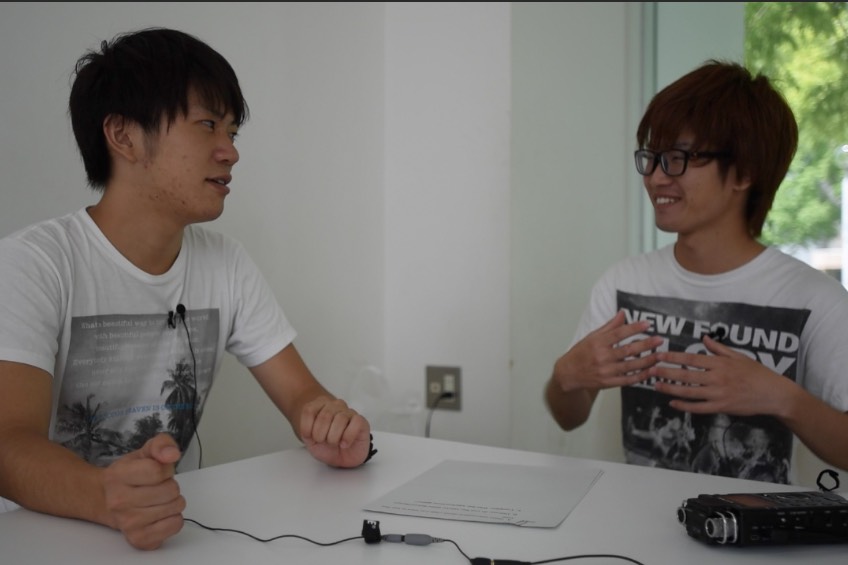
Yuusei and Ryutaro
This discussion between Yuusei and Ryutaro show a relatively average speaking rate, with Yuusei having far more number of words than Ryutaro, 451 to 260, who uses far too many minimal responses. Acoustic dysfluency is low, as is the overall amount of silence for both speakers 1.5%, with no cross-talk pausing. Both speakers are animated and fully engaged. Lexical dysfluency is extremely low, as is syntactic dysfluency. MLRs are relatively high for both speakers, 19.3 and 12.2, despite Ryotaro’s minimal responses. In short, this interaction about shopping and anime easily shows that dysfluency can be masked, insofar that Ryutaro did have a few very long responses that balanced out his rather short replies.

Harumi and Ryutaro
This discussion between Harumi and Ryutaro shows again a relatively low speaking rate for Harumi and relatively high rate for Ryutaro. Acoustic dysfluency is average, 5.8% or 37.3 seconds, and the conversation has no cross-talk pausing. It is quite animated, but there are too many minimal responses on the part of both. Harumi has 5.1 syllables syllables for her mean length runs while Ryutaro has 9.5. Again the mail dominates in the number of words produced with 371 and 205, and there is a bit too much repetition by both of the participants. This goes to show that while an interchange can be quite animated, the actual fluency can be quite low. The dysfluency is hidden by the minimal responses on the part of both participants.

Natsumi and Harumi
This conversation between Harumi and Natsumi shows a relatively average speaking rate for Natsumi (90.5) and a low one for Harumi (65.7). This is one of the more unbalanced intragender interactions in the corpus, with Natsumi having almost three times the number of words than Harumi. While acoustic dysfluency is relatively low at 18.9 seconds of silence or 3.2%, and only 5.6 cross-talk pausing, and with lexical dysfluency also being low, there is an illusion of fluency, but the low speaking rate does take a toll, as does the issues in syntactic dysfluency, with a lot of retracing on the part of Natsumi, 17 occurrences, and repetition, 42, occurrences. Harumi also had a high rate in this regard, 27. As for MLRs Harumi only had 4.4 compared to Natsumi’s 10.7. Meaningless syllables were also very high for both speakers, which makes this interaction, while animated, difficult to listen to.

Yuusei and Natsumi
This discussion between Natsumi and Yuusei show a relatively high speaking rate, with Natsumi having a speaking rate (A) of 92.3 while the male speaker has rate of 124.9, and the overall percentage of silence for the entire conversation was only 2.6%. Thus, acoustic, lexical, and syntactic dysfluency is relatively low though issues do remain with mean length runs (MLRs) which are relatively short, and with repetition, and meaningless syllables. However, in listening to the video, it becomes apparent that the high level of repetition and rephrasing found in Natsumi’s speech can make listening slightly irritating, but comprehension is unimpaired. Again, it is easy to see how minimal responses can impact the overall message, and again, more production and more explanation from the two speakers would make the interaction even more pleasant.

Natsumi and Ryutaro
This discussion between Natsumi and Ryutaro shows a low speaking rate with a lot of minimal responses. This does make for difficult listening, but the amount of silence is very low (1.8%) and the participants were engaged and motivated. There was a very high rate of retracing and repetition with Natsumi, and both had a high rate of meaningless syllables. This discussion shows the need to provide far more information in our replies, giving more details, even a story or an example. Again, this interaction shows more about the nature of dysfluency than fluency.
Session 8
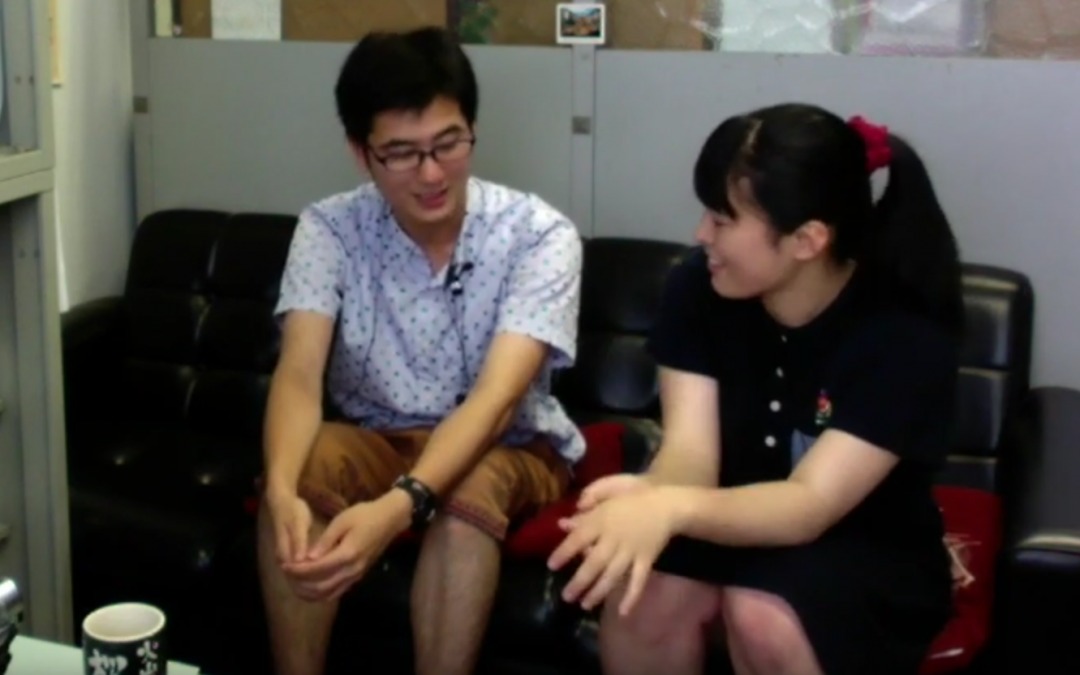
Ryotaro and Toko
Ryotaro is now talking with Toko, and in this discussion is they are discussing their favorite person. As both are in space technology, the two hit it off and the discourse is animated. Again, Toko produces far more words than her male counterpart, with 473 compared to Ryotaro’s 374, so this is rather refreshing to see. Acoustic dysfluency is low, 1.0% percent silence for overall discussion, and cross-talking pausing is non-existent. Lexical dysfluency is low, but in syntactic dysfluency, there is a high level of repetition, 42, for Ryotaro and 59 for Toko, likewise there is also a high level of meaningless syllables. MLRs are average. Minimal responses were low, and this was good to see.
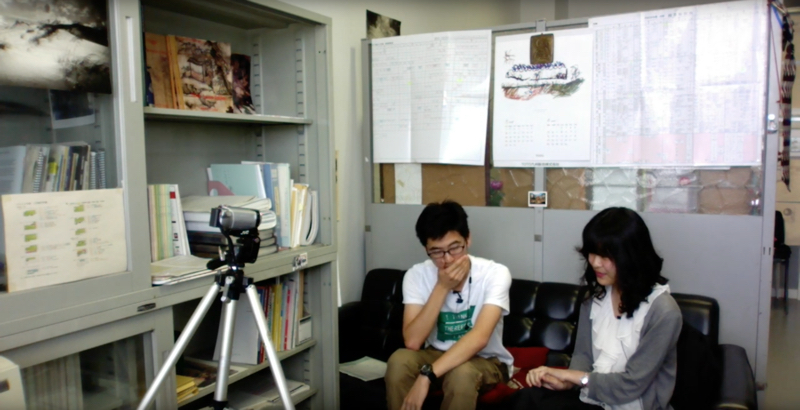
Ryotaro and Kaho
Ryotaro is now meeting Kaho and while cross-talk pausing is noted (16.5 seconds) Kaho seems far more comfortable talking with Ryotaro, though the overall amount of silence for the entire interaction is still high, 57.5 second, or 7.1%. Speaking rate is average for Ryotaro, but is quite low for Kaho, 50.4. Lexical dysfluency is low though some L1 is used. As for syntactic dysfluency, Ryotaro has high MLRs (14.9) but Kaho’s are average, 10.7. Again, we see, in regard to production, the males producing a far high number of words, Ryotaro’s 413 to Kaho’s 279. Meaningless syllables are slightly high. In short, both participants were more relaxed but had to think through their answers regarding their most important things in life.

Toko and Takumi
Takumi is now talking with Toko in his second gendered discussion. This one is quite different from his interaction with Kaho. The discussion is very animated and Toko is thoroughly engaged and interested, particularly when discussing music. This also is one of the few interactions that shows the female actually having more production, with Toko having 598 words compared to Takumi’s 374. Acoustic dysfluency is minimal, very little silence noted (0.3% for overall discussion!), and with lexical dysfluency only the moderate use of L1 is noted. For syntactic dysfluency, there is a high level of repetition for both participants, 45 for Toko and 59 for Takumi, and MLRs are average 12.8 for Toko but Takumi’s is rather on the low side, 8.4.
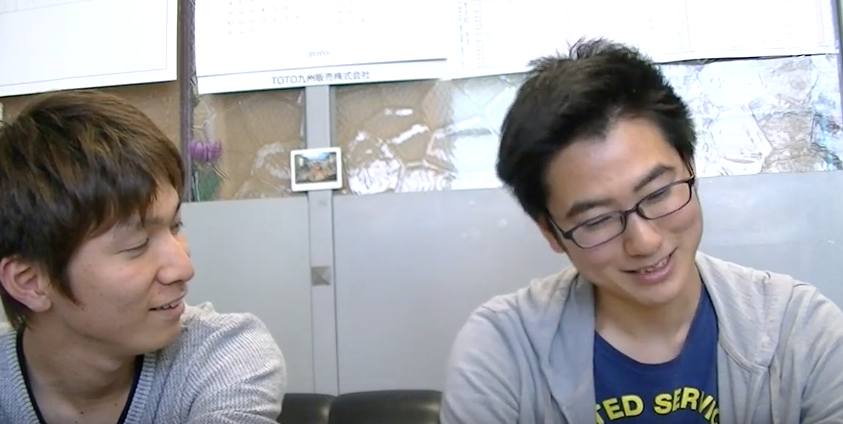
Takumi and Ryotaro
Takumi and Ryotaro have a fairly animated discussion with relatively high speaking rate, and very low acoustic dysfluency, total amount of silence is only 1.4% and with no cross-talk pausing. Similarly, lexical dysfluency is low as well, with only a high use of L1 on the part of Takumi (14 occurrences). MLRs are also approaching native use (12.9 / 13.6), and the conversation is rather balanced 274 words / 305 words, the only drawback is the high level of meaningless syllables. The conversation is some more “fluent” insofar that minimal responses are fewer.
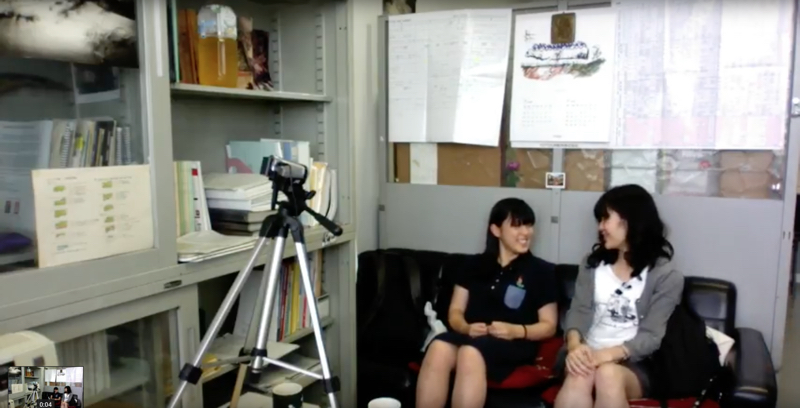
Toko and Kaho
The conversation between the two girls is balanced and with little lexical and acoustic dysfluency and with only some syntactic dysfluency being noted, insofar as to retracing, repetition, and meaningless syllables. The number of words is bit more balanced but Kaho is roughly a 100 hundred shy of Toko’s number of words at 365. While there are longer and more informative utterances, many of them are somewhat comprehensible due to the fragmentation and level of grammatical accuracy. However, both girls share enough background about Kitakyushu and Fukuoka that an animated and successful conversation was possible, despite the dysfluency.
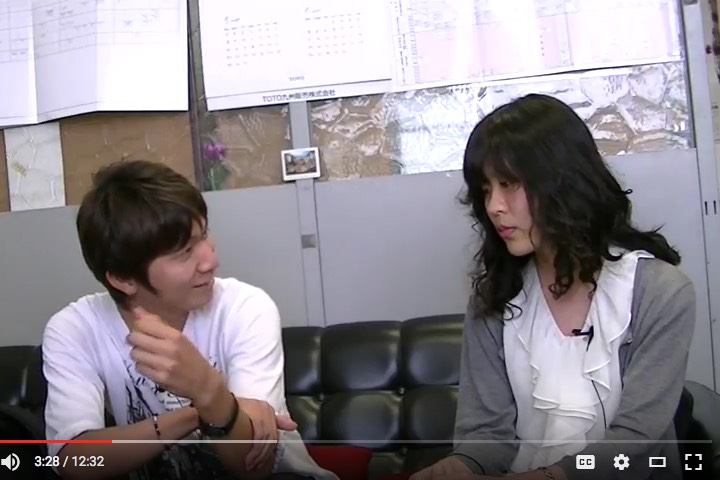
Takumi and Kaho
Kaho and Takumi have a rather awkward conversation with a very high rate of silence 18.7%. At times it seems that Kaho is extremely uncomfortable in talking with Takumi, and both participants have high rates of silence 62.4 for Takumi and 54.2 for Kaho. While the topic of exercise and sports is one that Takumi seems to delight in, it doesn’t seem apparent that Kaho has any knowledge or interest in the topic until later on when she does show some knowledge, in talking about her previous ballet experience and knowledge of baseball. As for acoustic dysfluency, there is high rate of cross-talk pausing 19.2 seconds, with several micropauses with Takumi. Takumi has a 12.2 second mean length pause rate as compared to Kaho, indicating that he is apparently at his wits end in trying to get responses from Kaho. Lexical dysfluency is only high with the use of L2, with Takumi having 23 occurrences.
Session 9

Yuika and Shunichiro
This engaging discussion between Shunichiro and Yuika shows the problem of minimal responses: while Shunichiro has a MLR of 10.0, Yuika’s is only 4.0. But in looking over the transcript, one can see that it is rare for both participants to express more than one sentence….
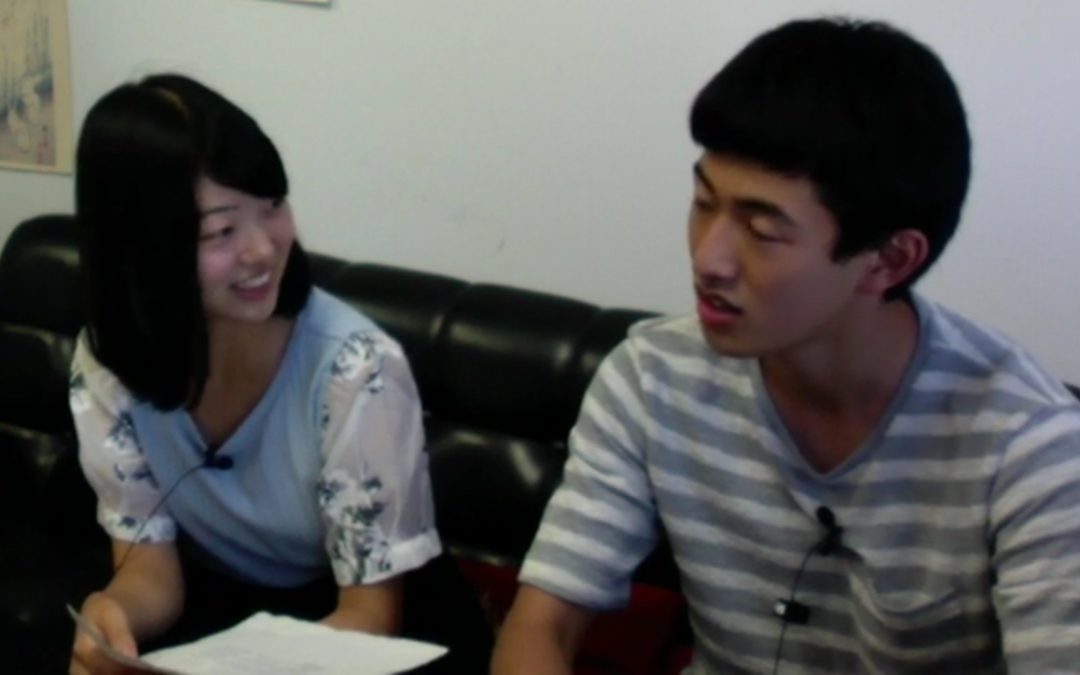
Yuika and Koki
This discussion between Koki and Yuika is a rather interesting case of how minimal responses function in a discourse. Because of her few and short responses, Yuika’s MLRs are an average 7.1 and her speaking rate…

Koki and Yumi
This discussion between Koki and Yumi shows a relatively high speaking rate (95.0) for Yumi and (107.7) for Koki. Acoustic dysfluency is a bit high, with 51.5 seconds of total silence, or 8.6% silence. Lexical dysfluency is low, as is syntactic dysfluency though Koki’s repetition is a bit high…

Shunichiro and Yumi
This discussion between Shunichiro and Yumi represents a more balanced discussion in which both participants contribute almost an equal amount of information although, again, the females provide fewer number of words than the males: with 177 words from Yumi to Shunichiro’s 285. The speaking rate for both participants is almost the same and is fairly average for this level of proficiency 86.3/88.8; acoustic dysfluency is rather high, 14.7%% silence with Shunichiro having 49.3 seconds of silence compared to Yumi’s 19, though cross-talk pausing is minimal. Lexical dysfluency is only notable due to the use of L1 and to some mispronounced word on the part of Shunichiro. Syntactic dsyfluency is a bit high insofar that MLRs are short with there being lots of repetition and meaningless syllables on the part of Shunichiro. As with the other transcripts, minimal responses are too common and both participants could make the interaction far more interesting by providing more insights, stories, opinions, and examples.

Yumi and Yuika
This discussion between Yumi and Yuika shows another relatively unbalanced discussion between females. Yumi is producing three times the number of words to Yuika, (238 words to 88) furthermore, Yuika has far too many minimal responses. Yuika’s MLRs, are only 4.2 syllables compared to Yumi’s 13.2. The speaking rates for both girls are very low: 54.3 for Yumi, with a dismal 37.7 for Yuika; however, the amount of silence is low, 5.0% or 17.8 seconds. While Yumi has higher production, she also has a higher rate of meaningless syllables (22 compared to Yuika’s 3). The interchange is the shortest of the corpora due to time considerations for this particular session, but it does give an adequate picture of how same-sex discussions can be more dysfluent than gendered ones, but this, of course, is case-by-case.

Shunichiro and Koki
This discussion between Shunichiro and Koki shows a fairly typical interaction for participants at this level. Acoustic, lexical and syntactical dysfluency are quite low and the MLRs are almost native level. In fact, there are few minimal responses; in addition, the amount of silence is also low, 5.0% or 38.5 seconds, with no cross-talk pausing. The speaking rate is average for Shunichiro and a bit higher for Koki, and while Shunichiro does have a bit too much repetition there is no retracing on his part. Shuniricho has a higher number of words compared to Koki, 610 to 434. In short, this reflects a fairly high level of fluency for participants at this level of proficiency.
ADVANCED LEVEL
Session Adv 1
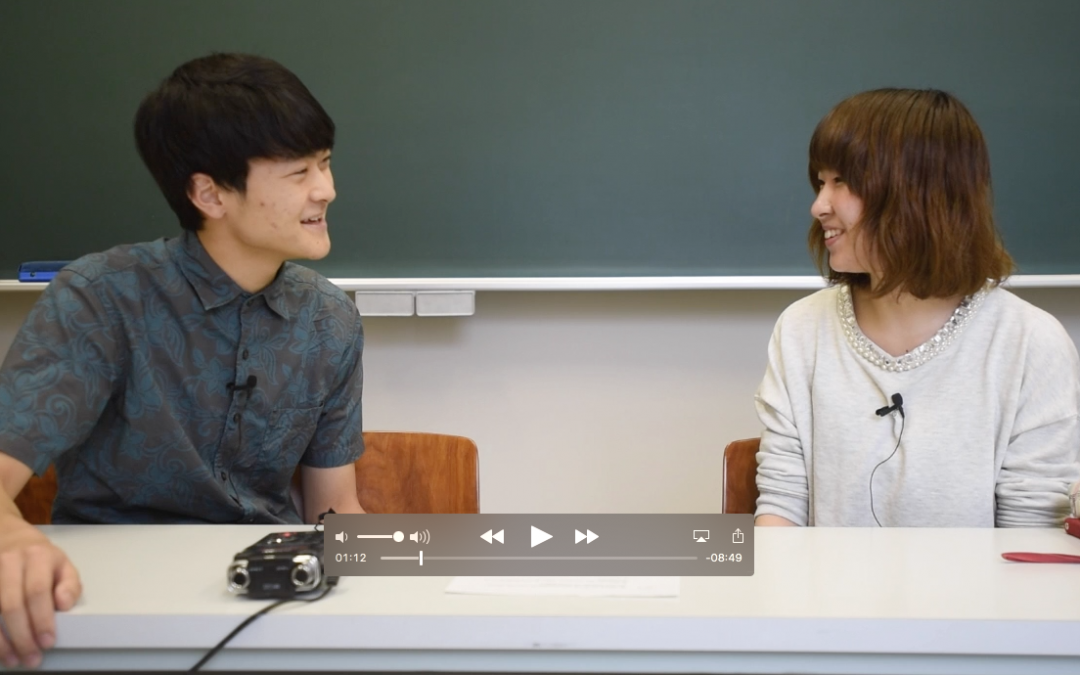
Ken and Mao
The percentage of silence is relatively low, 1.6% or 9.7 seconds, and the speaking rates for both participants is relatively high, Ken’s 128.9 or 107.0. There is no cross-talking pausing. Ken’s MLRs are fairly long, but Mao’s is very short 5.5, and there are too many minimal responses on her part. Longer, and more engaged replies are important, so the current discussion is actually a bit unbalanced. Ken does have far more meaningless syllables 128 as compared to Mao’s—32. Ken also has a high level of repetition.
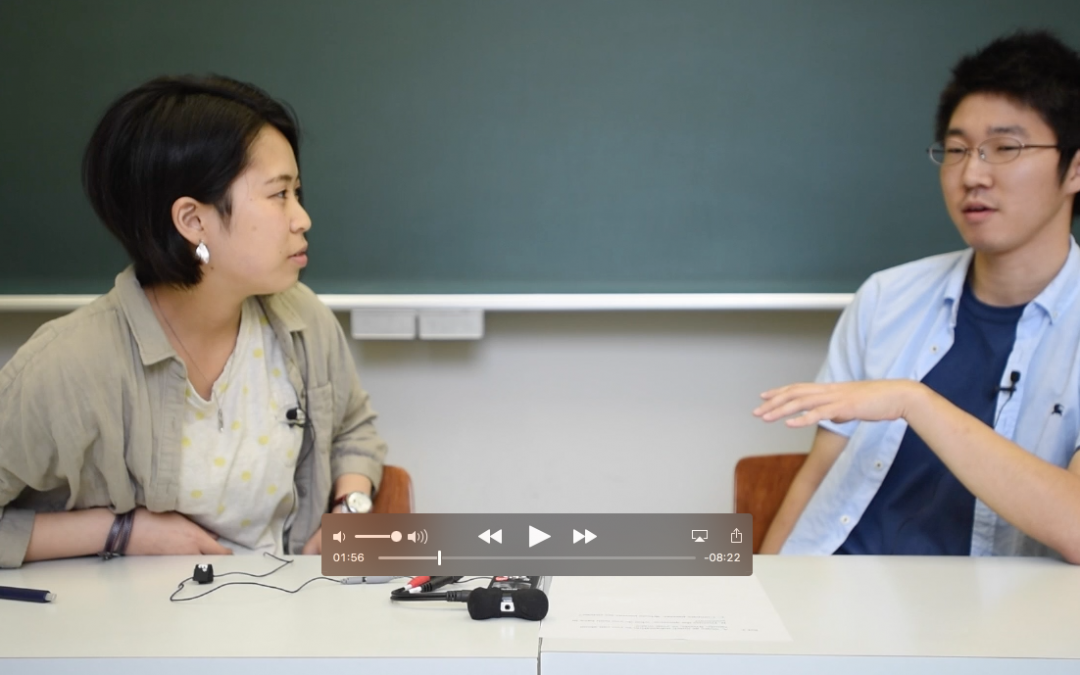
Yuka and Masaki
This is one of the more fluent discussions marked by high speaking rates, Yuka’s 129.2 and Masaki’s 140.1, and with no cross-talk pausing. The percentage of silence is very low 0.8%, 5.3 seconds. Average mean length runs (MLRS) are also very high, with Masaki having 25.1 and Yuka’s 13.2; however, as males tend to dominate discussions, this is also the case, with Masaki having 669 words compared to Yuka’s 348. Minimal responses are few.

Mao and Masaki
The discussion is more unbalanced than others, with Masaki having 826 compared to Mao’s 242, who often relies on minimal responses. The conversation is warm but Masaki seems to be far more motivated and engaged, though he does have more repetition 23 than Mao (4), retracing (7) to Mao’s (1), and more silence 14.0 seconds compared to Mao’s (0). Masaki also has greater MLRs 19.4 which is almost native level, which is far higher than Mao’s 5.8. Recommendation is that Mao provides longer and more descriptive replies and to ask more questions.
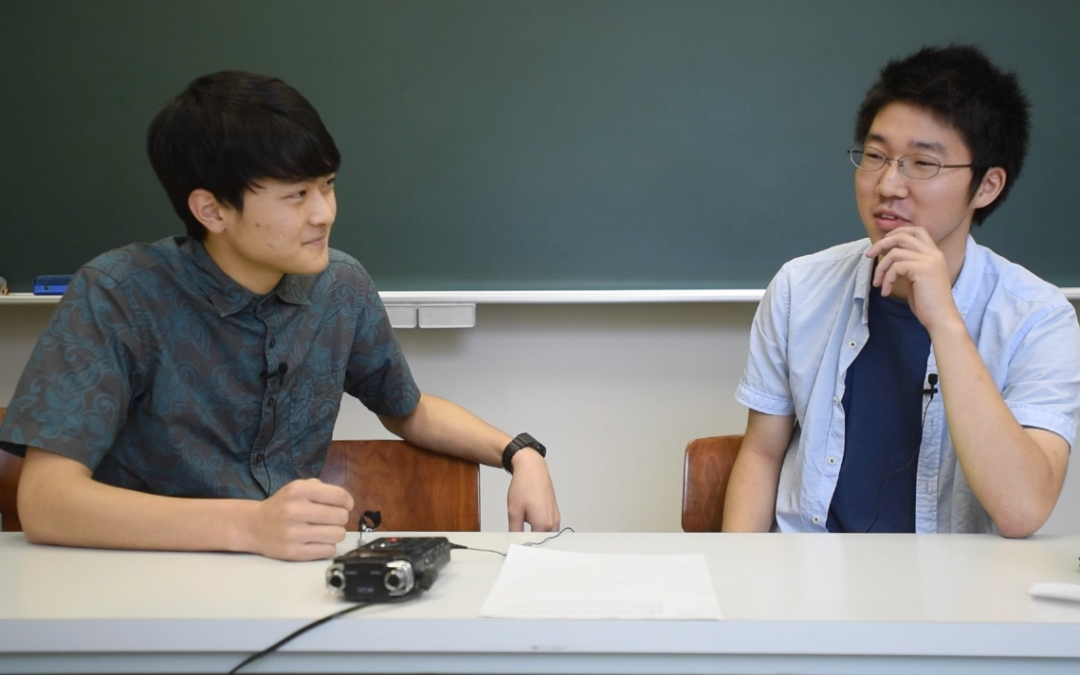
Ken and Masaki
In this same-sex discussion, the number of words for both participants is relatively similar 660 for Masaki and 540 for Ken. Speaking rates are unusually high, 146.7 and 155.5 for Ken which reflects a high level of motivation. No cross-talk pausing is noted, and the amount of silence is only 2.6 seconds, thus 0.4%. Masaki does have not syntactic dysfluency in regard to meaningless syllables 100 as compared to 43 for Ken. MLRs are long: 21.6 and 18.3, though Masaki does have a high level of repetition compared to Ken’s 64 to 7 occurrences. Abandoned sentences are noted in this discussion.
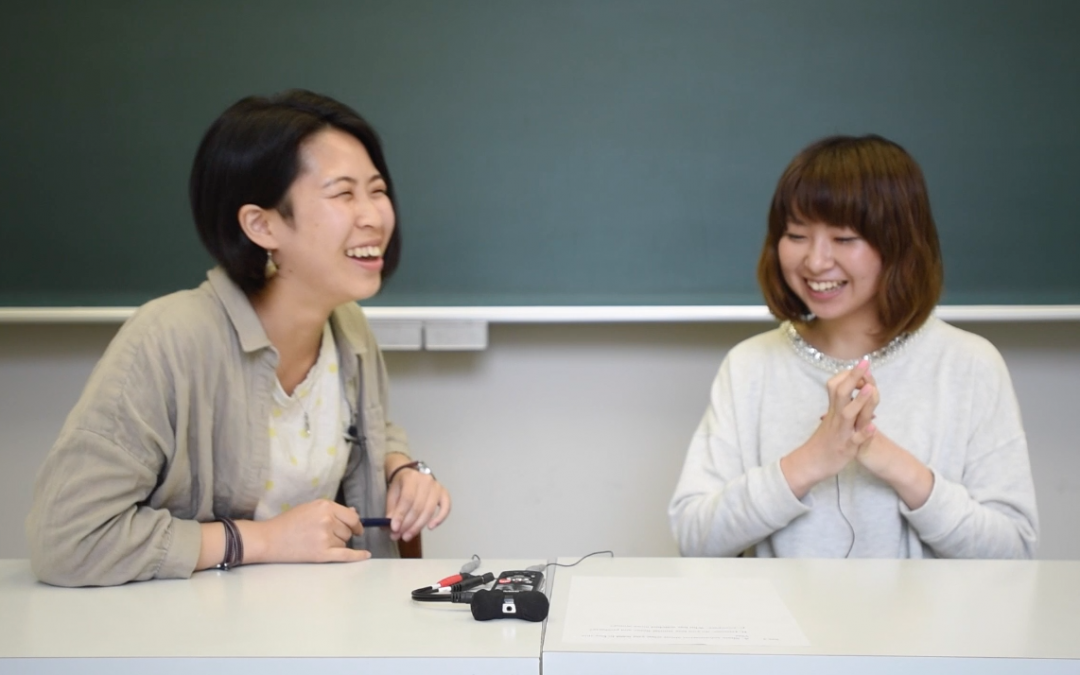
Yuka and Mao
The participants in this discussion are engaged and happy, laughter being often noted throughout the discussion. While minimal responses are common, there is an equal number of longer and more descriptive replies. Yuka has a high number of words, 729 compared to 234 words for Mao, but she does have a lot of meaningless syllables, 45. MLRs are high for Yuka 17.5 but Mao’s speech is rather limited to 5.4 MLRs. The percentage of silence is low though to 13.2 seconds or 2.2%.
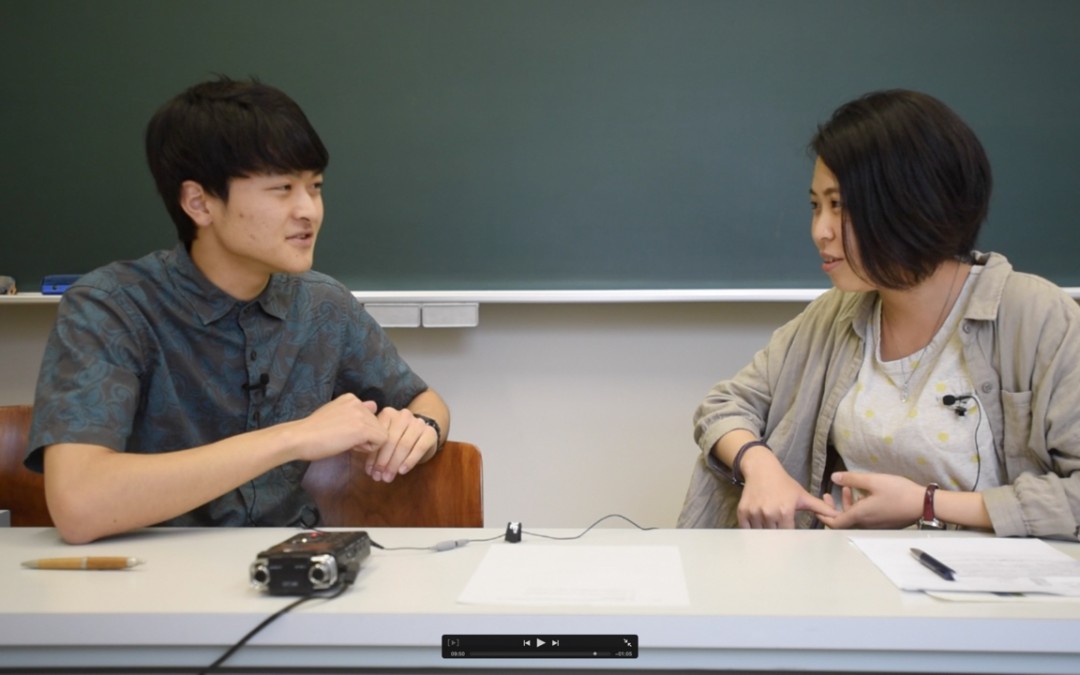
Ken and Yuka
This discussion is notable insofar that Yuka has longer speaking time than Ken (367.9 seconds) compared to 271.7 for Ken, thus she has 619 words compared to Ken’s 536. There is no cross talk pausing. Minimal responses are few and both participants seem to have more motivation in giving interesting replies. Speaking rate for both participants is fairly high, close to native speakers, 131.9 for Yuka and 130.7 for Ken. Acoustic and Lexical dysfluency is minimal and the only issue in syntactic dysfluency is that of Yuka’s repetition. MLRs are fairly long, 11.7 and 14.9. The discussion is warm and fluid.
Session Adv 2

Keiko and Takuya
Session Adv 2 : Female 1 to Female 2 Statistics Number of Words: 660...
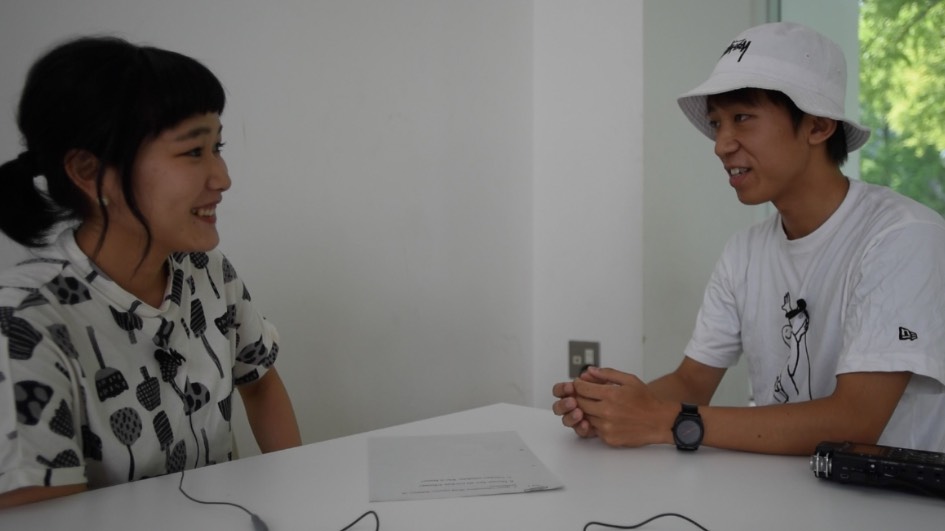
Mizuki and Ryuta
Session Adv 2 : Female 1 to Female 2 Statistics Number of Words: 660...
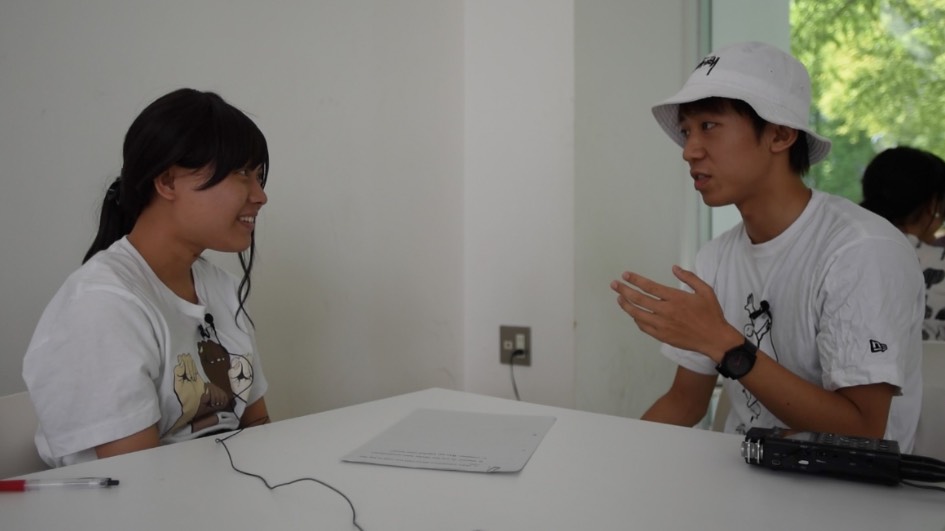
Keiko and Ryuta
Session Adv 2 : Female 1 to Female 2 Statistics Number of Words: 660...
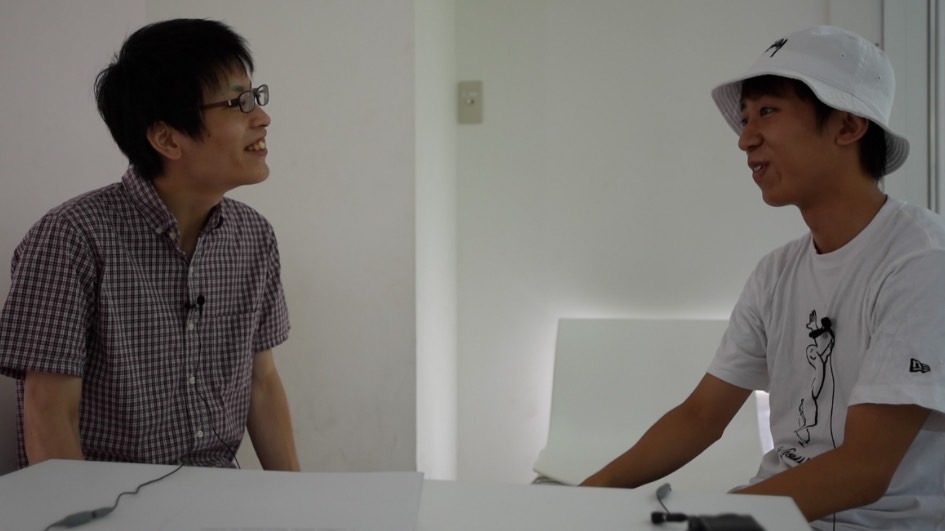
Takuya and Ryuta
Session Adv 2 : Female 1 to Female 2 Statistics Number of Words: 660...

Mizuki and Takuya
Session Adv 2 : Female 1 to Female 2 Statistics Number of Words: 660...
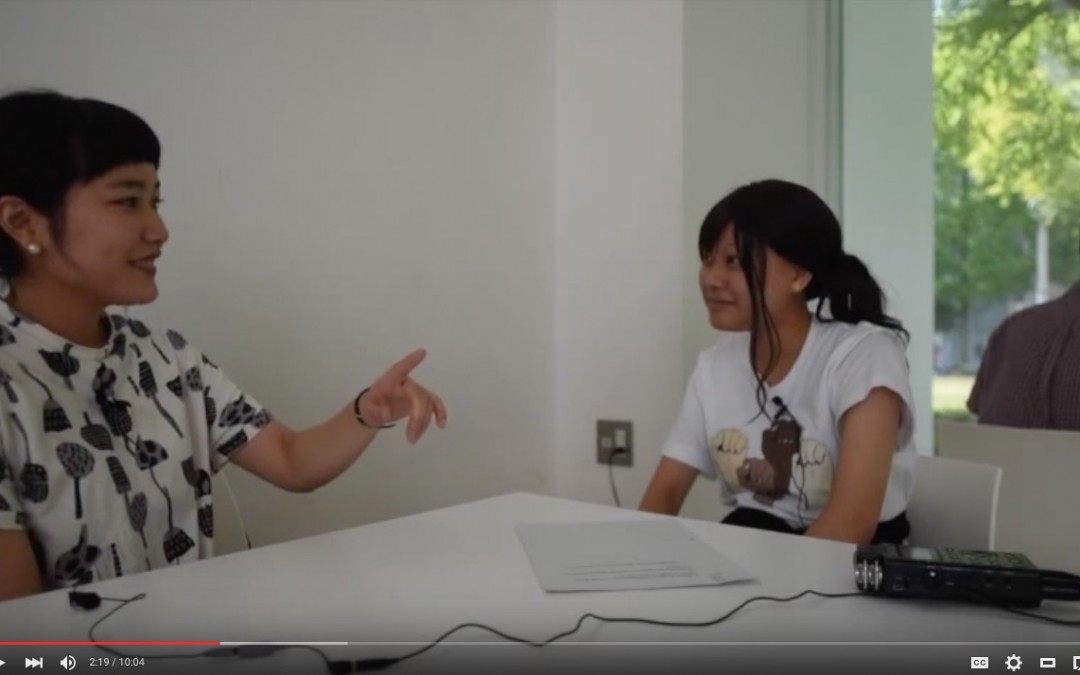
Mizuki and Keiko
Session Adv 2 : Female 1 to Female 2 Statistics Number of Words: 660...